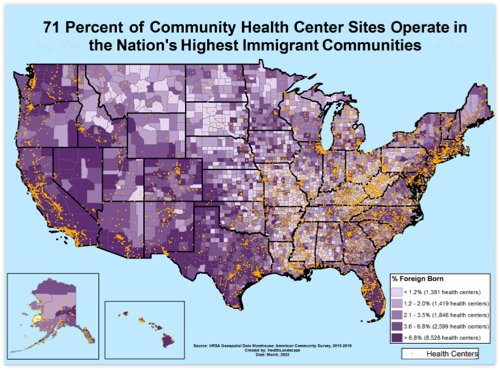Sara Rosenbaum, Peter Shin, Jessica Sharac, Feygele Jacobs
On February 24th the Biden administration issued a proposed rule that would replace regulations issued in 2019 by the Trump administration. The 2019 rule, reversing decades of policy, threatened to brand as “public charges” – and therefore ineligible for permanent U.S. residency (green card) status – legal immigrants who received public housing or Supplemental Nutrition Assistance Program (SNAP) assistance or most forms of Medicaid. As the Biden administration rule concluded, the 2019 rule, which was enjoined nationwide before it could take effect, exacted an unduly harsh price on the immigrant population, including immigrants considered exempt from the public charge determination process.
In discussing its proposed rule, the Biden administration presented extensive evidence documenting the 2019 rule’s “chilling effect” on immigrants’ use of public benefits. Studies show not only a major decline in utilization by immigrants of benefits designated as public benefits under the 2019 rule but also of other key public health services that lie completely outside the definition of public benefits. One study cited by the administration focused on community health centers and showed a significant drop in patient visits and revenue during an 8-month period. Furthermore, as the evidence shows, the 2019 rule, which went into effect in February 2020, had its heaviest impact during the height of the COVID-19 pandemic. This fact further deepened the health risks for immigrants, their families (including citizen children whose eligibility was completely unchanged but whose continued use of benefits triggered fear of reprisal against immigrant family members), and indeed, entire communities, by deterring the use of health care.
The Biden administration’s proposal would restore previous public charge policy by eliminating consideration of public housing assistance, SNAP benefits, and Medicaid coverage other than for long-term institutional care. Furthermore, the proposed rule emphasizes a return to the approach that Congress has sought over decades of evolving U.S. immigration law. This approach, exemplified in multiple federal laws, represents a careful effort to balance the goal of immigrant self-sufficiency against their ongoing eligibility for programs that promote their health and well-being, as well as that of their families, while also protecting the public’s health.
As the figure above illustrates, because of their location and their mission to serve high-need communities and populations, community health centers play a major role in immigrant health and health care. For this reason, the Biden administration’s proposal carries important implications for the ability of health centers to fulfill their community mission. As the figure shows, out of the 15,773 total service sites operated by 1,402 community health centers in 2022, over half (8,528 service sites, 54 percent) are located in communities that fall within the highest-immigrant communities, that is, communities falling within the top quintile of all U.S. communities in terms of the proportion of community residents who are foreign-born. In all, 71 percent of all health center sites operate in communities that fall within the top two quintiles of communities with foreign-born community residents.
Because recent immigrants are significantly more likely to be low-income, they also can be expected to be more likely to be community health center patients. Nearly all community health center patients are low-income, and community health centers are required to serve patients regardless of their ability to pay and to charge patients on a sliding fee scale. As a result, community health centers will play an important role in implementing the rule once finalized. Their role extends beyond the care they furnish; as trusted community leaders, health centers will assume front-line importance in community and patient outreach aimed at ensuring that immigrants understand this fundamental shift in policy, one that seeks to restore the balance between immigrant self-sufficiency on one hand, and public health and health equity on the other.



